According to a study conducted by Google, people are 2x more likely to have a brand experience on a mobile device than they are to interact in person, through the TV or through a computer. – Forbes
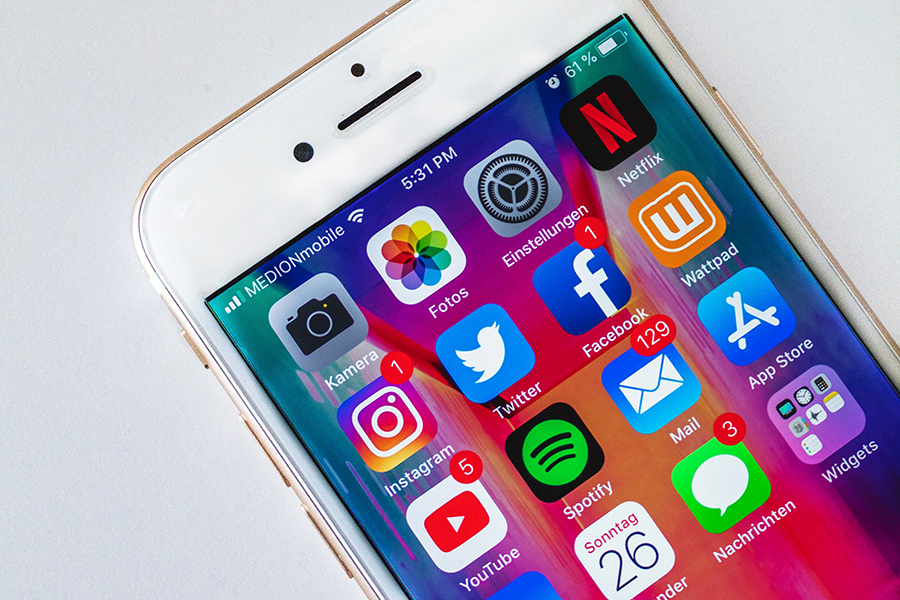
Developing a mobile-first strategy requires a deep understanding of mobile consumer habits. Going mobile-first will likely require a new focus on content and a shift from the desktop or printed material. ComScore recently released its statistics on mobile usage trends. Here are 5 reasons to develop a mobile-first strategy today. All graphs and statistics are courtesy of ComScore.
1. Mobile users consume more than 2x minutes vs. desktop users:
When looking at each region’s desktop users and mobile users separately, mobile users universally consume more digital minutes per person – more than double in the majority of countries.
2. Smartphone takes the largest share of global digital minutes:
The smartphone is now the dominant platform in terms of total minutes across every market.
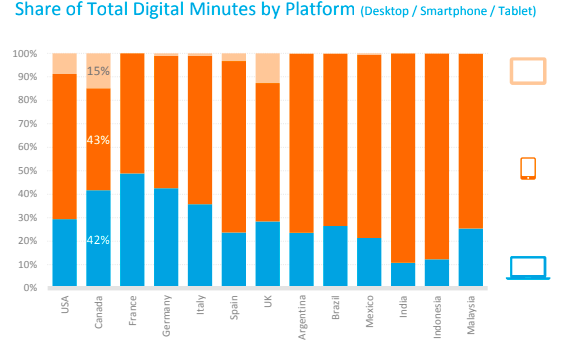
3. Apps account for 80% of mobile time:
When considering mobile (smartphone and tablet) minutes in isolation, they are overwhelmingly dominated by app consumption – over 80% of all mobile time in the markets considered for this report.
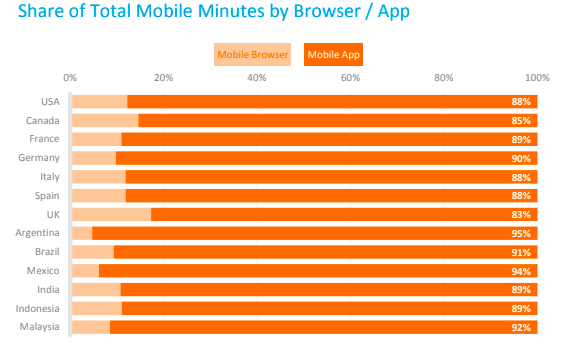
4. Size of ‘mobile only’ audience grew almost universally:
‘Mobile only’ audiences are now second only to ‘multi-platform’ users in the majority of markets, and appear to be increasing their reach among the overall population in many markets.
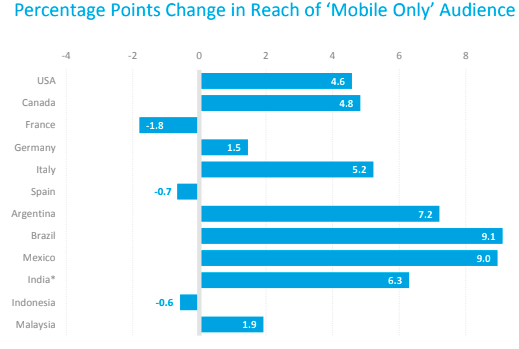
5. Mobile-Only usage within the Retail category has increased across all generations:
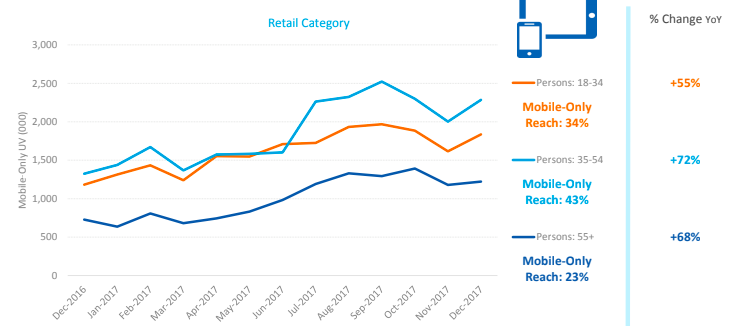
The statistics do not lie. Across all countries, age groups, and interests, we are seeing increased mobile usage. However, simply building a mobile app will not be enough to maximize return on investment. A mobile app must do more than “exist” on the app stores, the content will need updating and will require adjusting to reflect feedback and analytics. A mobile-first strategy requires adopting new ways of communicating and generating revenue.
If you don’t have a technical background or the budget to develop an app in-house, look for a mobile app solution that comes equipped with a backend content management system. A system like Info Grove has a user-friendly backend that allows for quick content updates, setting geo-fences, adding banner ads, and more. Click here to learn more about Info Grove mobile apps and see if it’s right for you.



Share This Article